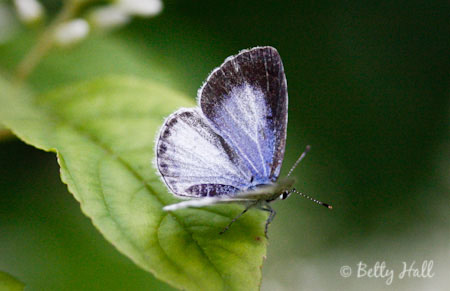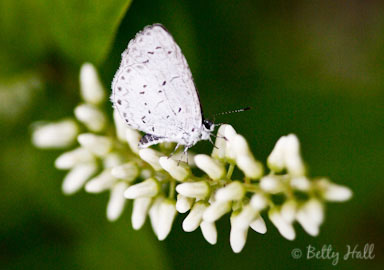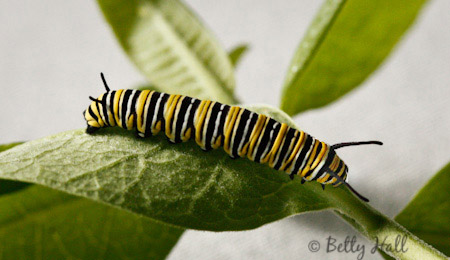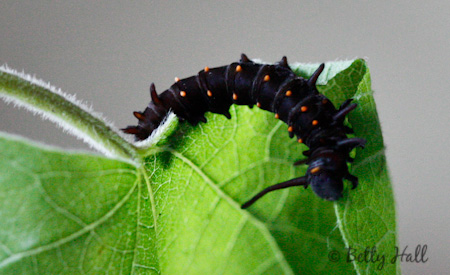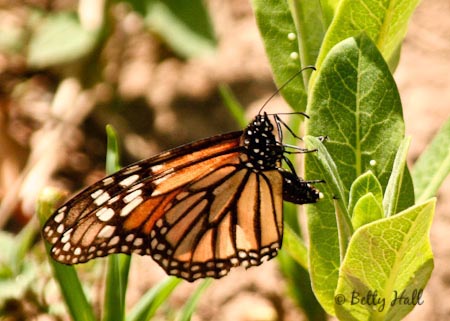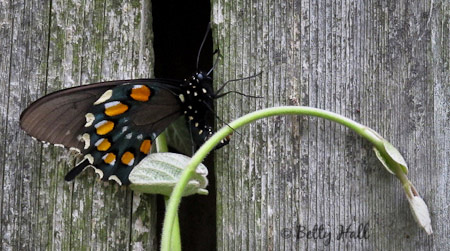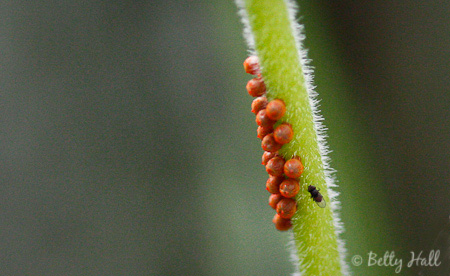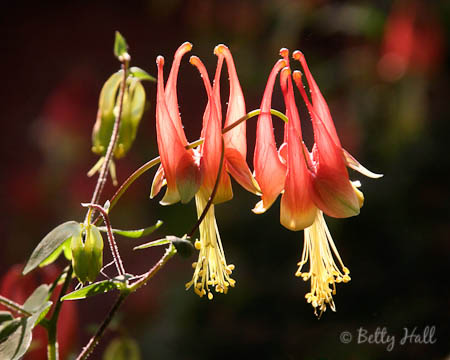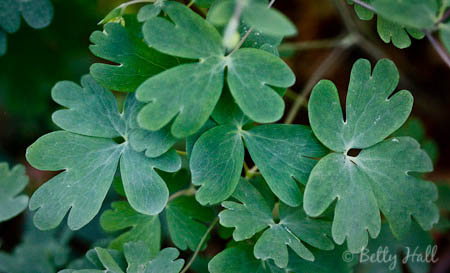I’m enjoying fast-flying, tiny blue butterflies in the backyard. I think they are Summer Azures (Celastrina neglecta). They could easily be the “sky-flakes” Robert Frost refers to in his poem, “Blue Butterfly Day.” I was glad to have the camera with me when one lit nearby. It was an extra special treat to see the blue markings of the upper wings.
It’s much more common for the Azures to perch with their wings closed, which shows a very different color and wing pattern.
I often see the Azures around the Virginia Sweetspire (Itea virginica), one of our native shrubs. This is the “Little Henry” variety which stays small.
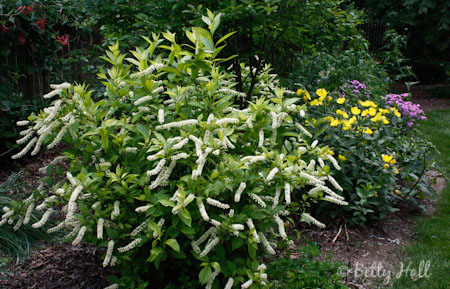 This hardy shrub will grow in sun or shade. I recently learned that it is a host plant for the Azures. Knowing that it provides food for both caterpillars and adults leaves me appreciating it even more.
This hardy shrub will grow in sun or shade. I recently learned that it is a host plant for the Azures. Knowing that it provides food for both caterpillars and adults leaves me appreciating it even more.

